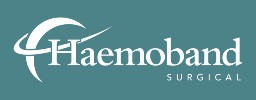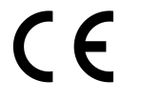Haemorrhoids can be very uncomfortable, so effective treatment is essential. With that in mind, is it better to band haemorrhoids or treat them with lasers?
Each approach to haemorrhoid treatment has its advantages, so it’s worth carefully weighing the options. Understanding more about haemorrhoid banding vs laser removal can make the decision easier for the clinician and patient.
What Is Haemorrhoid Banding?
Haemorrhoid banding is also known as haemorrhoid rubber band ligation (RBL). It’s a non-surgical procedure in which the doctor positions a medical-grade rubber band around a haemorrhoid. The band is placed using an instrument called a ligator. Single-use devices are safe, affordable, easy to operate and eliminates the risk of cross contamination.
The Haemoband-PLUS is ready-to-use straight from the pack and comes with four pre-loaded bands, which means that the entire procedure only takes a few minutes to complete. It also allows for banding of 1, 2 or 3 separate haemorrhoids in one procedure.
Once the rubber band is around the haemorrhoid, it constricts the tissue and reduces the blood supply to the haemorrhoid. The haemorrhoid withers within a few days and soon falls off, mostly without the patient realising it.
Scar tissue remains in its place. That strengthens the rectal wall and discourages new haemorrhoids from forming.
What Is Haemorrhoid Laser Treatment?
The laser’s energy is targeted at the blood vessels that feed the haemorrhoid. It causes the vessels to seal shut. As with banding, this reduces blood flow so that the haemorrhoid will shrink.
Haemorrhoid Banding vs Laser Treatment
Once a good understanding of how haemorrhoid banding and laser treatment work, it will help the clinician and patient decide which option is right for various haemorrhoid situations.
Procedures
Both haemorrhoid banding and laser treatments can be done as outpatient procedures.
Haemorrhoid band ligation can be performed in the doctor’s office. It requires no bowel preparation or anaesthetic. This treatment is remarkably quick. In fact, procedures performed with the Haemoband-PLUS may be completely finished in less than 5 minutes.
With laser treatment, some at-home preparation may be required, and a local anaesthetic may have to be administered. The length of laser treatments can vary, but some patients may be required to stay in the clinic or hospital for a few hours.
Costs
Because haemorrhoid banding doesn’t require an operating room or anaesthetic, it can be done very affordably, using a low-cost disposable ligation tool like the Haemoband-PLUS Multi Band Ligator.
Laser treatment can be more expensive. Not surprisingly, this type of surgery requires specialist laser equipment, which can be very expensive.
Recovery
One thing to note in the haemorrhoid banding vs laser removal discussion is that either option typically offers an easier recovery than a traditional haemorrhoidectomy.
Most people feel better within a few days of having their haemorrhoids banded. Patients resume their normal activities immediately, on the same day.
Laser haemorrhoidectomy, on the other hand, could require a few days to a week off of work for recovery.
Success Rates
Minimally invasive haemorrhoid procedures such as banding provide long-term relief for most patients. Research has found that banding & laser procedures produces similar immediate results. Overall, Rubber Band Ligation (RBL) and Laser Surgery are very similar in regards to their efficacy. However, the more advanced devices of haemorrhoid ligators on the market are over 90% effective.
It is worth noting that, research does suggest that the recurrence rate when using laser is considerably higher compared to when using RBL as a therapy for haemorrhoids. For these reasons, Rubber Band Ligation is considered to be a Gold Standard Treatment.
Haemorrhoid Banding vs Laser Removal: Which one is best?
Choosing a haemorrhoid removal procedure is a decision that should be carefully made by doctors and patients together. The right type of surgery will depend on a variety of factors, including how serious the haemorrhoids are and how much time is available for recovery. Rubber Band Ligation is recommended for 1st, 2nd and 3rd degree haemorrhoids only (not 4th).
For instances when ligation is the best option, consider the Haemoband-Plus Multi Band Ligator as your instrument of choice. This disposable Latex-Free Rubber Band Ligator is the best tool for quick, safe and reliable band placement. Contact Haemoband Surgical Ltd to learn more.
Haemoband-PLUS: Gold Standard Device
- Over 1 Million devices have been sold globally to date, with a non-conformance rate of 0.0001%. It’s a proven quality technology!
- Sales of the device in 40+ countries and growing.
- Innovative & Agile production methods guarantees supply for our customers.
- Become a Haemoband Distributor today











